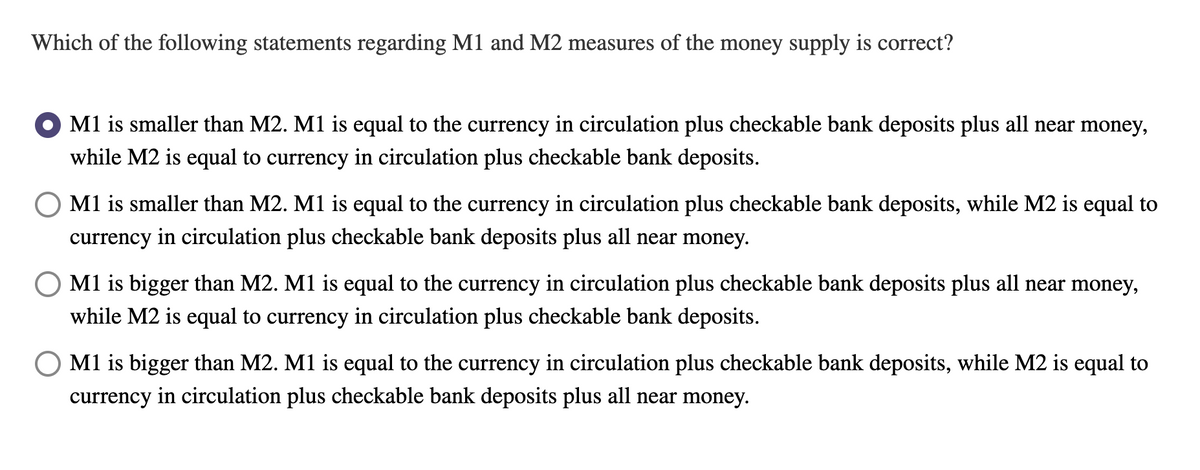Which of the following statements regarding M1 and M2 measures of the money supply is correct? M1 is smaller than M2. M1 is equal to the currency in circulation plus checkable bank deposits plus all near money, while M2 is equal to currency in circulation plus checkable bank deposits. M1 is smaller than M2. M1 is equal to the currency in circulation plus checkable bank deposits, while M2 is equal to currency in circulation plus checkable bank deposits plus all near money. M1 is bigger than M2. M1 is equal to the currency in circulation plus checkable bank deposits plus all near money, while M2 is equal to currency in circulation plus checkable bank deposits. M1 is bigger than M2. M1 is equal to the currency in circulation plus checkable bank deposits, while M2 is equal to currency in circulation plus checkable bank deposits plus all near money.
IS-LM-PC Analysis
The IS (Investment Saving), LM (Liquidity Preference- Money Supply), and PC (Philips Curve) is the model that looks at the dynamics of output and inflation. It takes into account the central bank policy decision to adjust the inflation and real interest rate in the economy. It enables the economist to weather to priorities between employment and inflation rate analyzing the model. It is a practice-driven approach adopted by economists worldwide.
IS-LM Analysis
The term IS stands for Investment, Savings, and LM stands for Liquidity Preference, Money Supply. Therefore, the term IS-LM model is known as Investment Savings – Liquidity preference money Supply. This model was introduced by a Keynesian macroeconomic theory which shows the relationship between the economic goods market and loanable funds market or money market. In other words, it shows how the market for real goods interacts with the financial markets to strike a balance between the interest rate and total output in the macroeconomy. This particular model is designed in the form of a graphical representation of the Keynesian economic theory principle. The output and money are the two important factors in an economy.

Trending now
This is a popular solution!
Step by step
Solved in 2 steps









